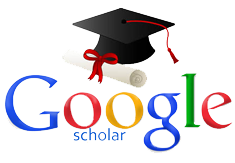Mengenal Sejarah Siaran Radio, Televisi, Multimedia (Internet) Bermuatan Dakwah
DOI:
https://doi.org/10.31004/jpdk.v5i1.11541Abstract
Karya ini bertujuan untuk mengenali sejarah media massa elektronik , televisi, multimedia (internet) bermuatan dakwah sebagai media massa. Eksplorasi ini menggunakan metodologi subyektif, mata pelajaran ditonjolkan atau difokuskan dengan alasan bahwa pemeriksaan ini bersifat mencerahkan. media elektronik dengan cepat menyebarkan informasi tentang bagaimana hal itu memengaruhi kehidupan orang dan masyarakat kepada khalayak luas sejumlah besar mad'u yang beragam dapat dijangkau oleh media elektronik. kemampuan media elektronik dalam mengakomodir berbagai metode dakwah memungkinkan para mubaligh mendorong orisinalitas penciptaan metode dakwah yang paling efisien.Downloads
Published
2023-01-14
How to Cite
Efendi, E. ., Ritonga, F. adha ., & Fahrezi, I. . (2023). Mengenal Sejarah Siaran Radio, Televisi, Multimedia (Internet) Bermuatan Dakwah. Jurnal Pendidikan Dan Konseling (JPDK), 5(1), 3396–3405. https://doi.org/10.31004/jpdk.v5i1.11541
Issue
Section
Articles
License
Copyright (c) 2023 Erwan Efendi, Fahmi adha Ritonga, Irgi Fahrezi

This work is licensed under a Creative Commons Attribution-ShareAlike 4.0 International License.
Authors retain copyright and grant the journal right of first publication with the work simultaneously licensed under a Creative Commons Attribution-ShareAlike 4.0 International License that allows others to share the work with an acknowledgement of the works authorship and initial publication in this journal. Authors are able to enter into separate, additional contractual arrangements for the non-exclusive distribution of the journals published version of the work (e.g., post it to an institutional repository or publish it in a book), with an acknowledgement of its initial publication in this journal. Authors are permitted and encouraged to post their work online (e.g., in institutional repositories or on their website) prior to and during the submission process, as it can lead to productive exchanges, as well as earlier and greater citation of published work (See The Effect of Open Access).
.png)













